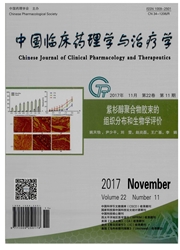

 中文摘要:
中文摘要:
成组序贯设计因其拥有较少的病例样本数和较早终止试验的可能性成为肿瘤药物临床试验设计方法的较好选择。如何科学有效地设计和应用成组序贯设计,本文通过Monte Carlo试验模拟,探讨肿瘤药物临床试验中成组序贯设计的期中分析次数、实施时间以及α消耗函数选取等问题,为读者系统指明如何去规划一次成组序贯试验以及如何确定其最优的试验参数。模拟结果表明,成组序贯设计以时间点2∶1∶1折半划分的三次期中分析为好,其期望样本含量仅为420.53。Lan-Demets的五种α消耗函数中,1.5次幂和2次幂的α消耗函数拥有最小期望样本含量约393例,相对于O'Brien-Fleming设计和Po-cock设计在整体上更显优势。
 英文摘要:
英文摘要:
The group sequential design is a good choice of oncology trial design because of the smaller sample size and the probability of early stopping for efficacy/futility. To design and apply the group sequential trials scientifical- ly, we illustrate how to choose the number, tim- ing of interim analysis, alpha spending function and optimal trial parameters by employing Monte Carlo simulation. The simulation results show that the three-stage design of 2 = 1 : 1 time point, whose expected sample size is 420.53, is the best ehoice in the group sequential design. And the expect sample size is only 420.53. A- mong the five a spending functions proposed by Lan and DeMets, the 1.5th power and quadratic a spending function, which have the smallest ex- pect sample size of 393 cases, are better than O' Brien-Fleming and Pocock design.
 同期刊论文项目
同期刊论文项目
 同项目期刊论文
同项目期刊论文
 期刊信息
期刊信息
